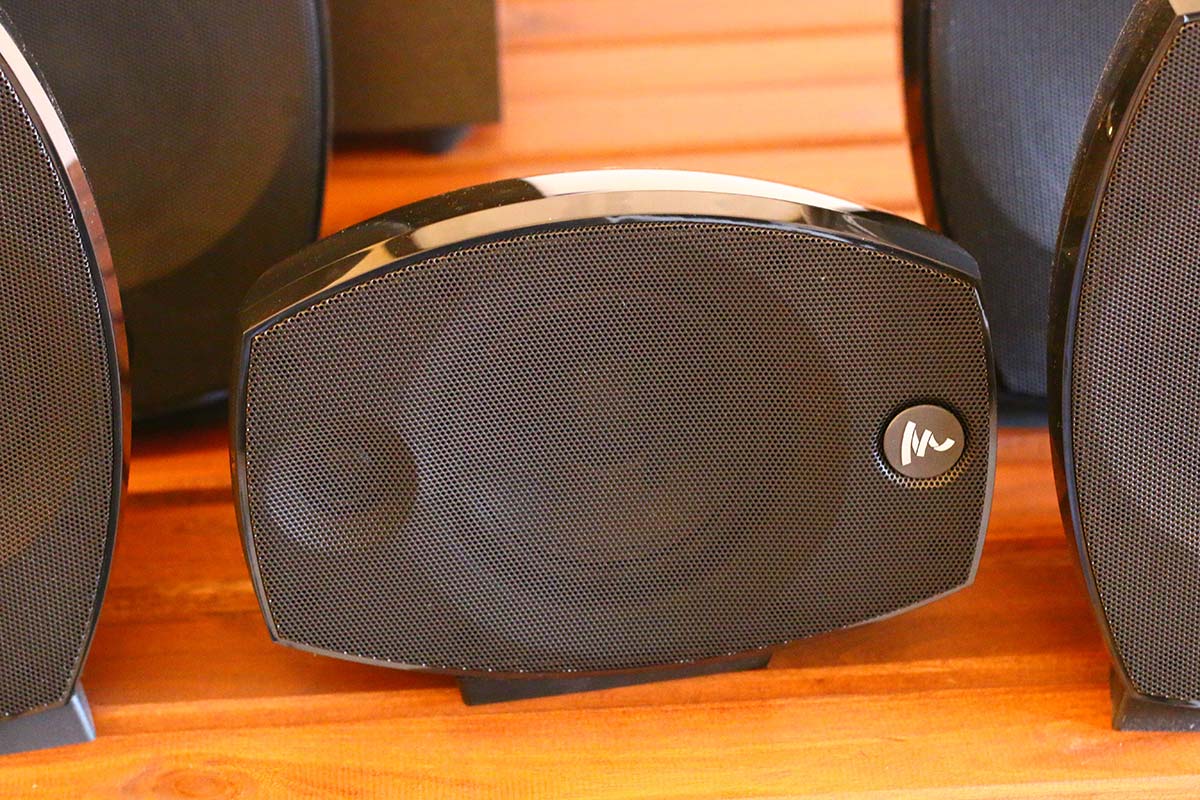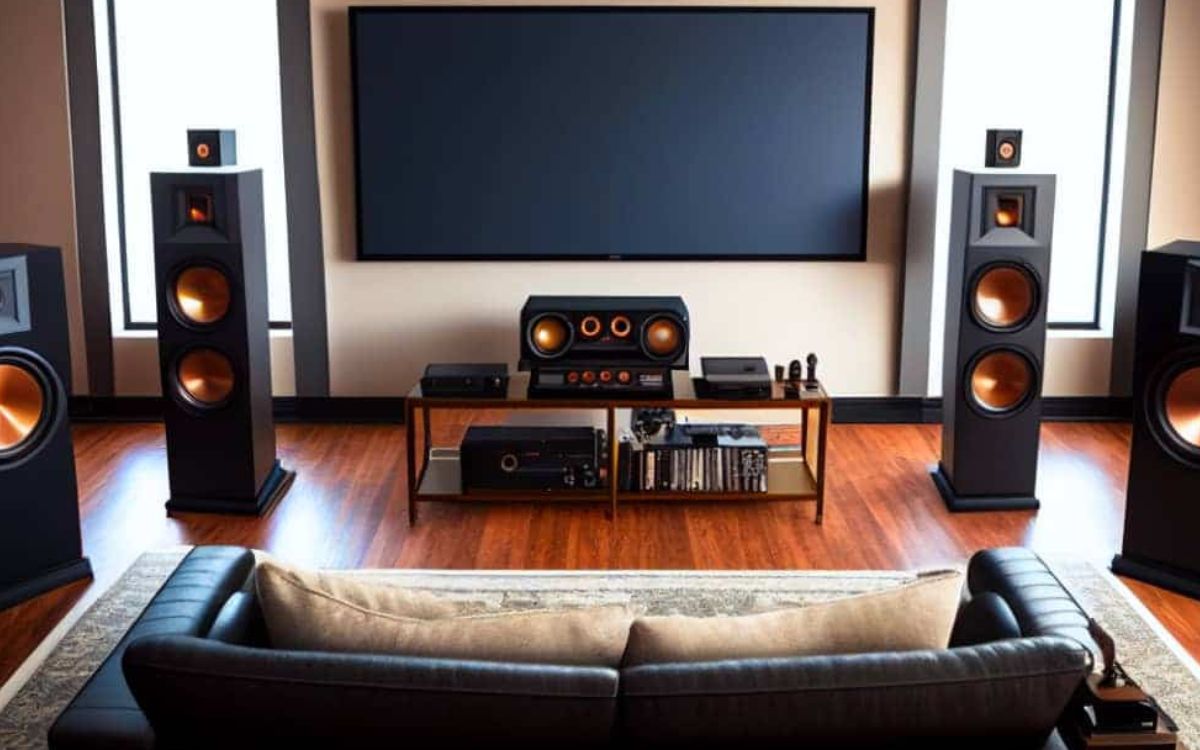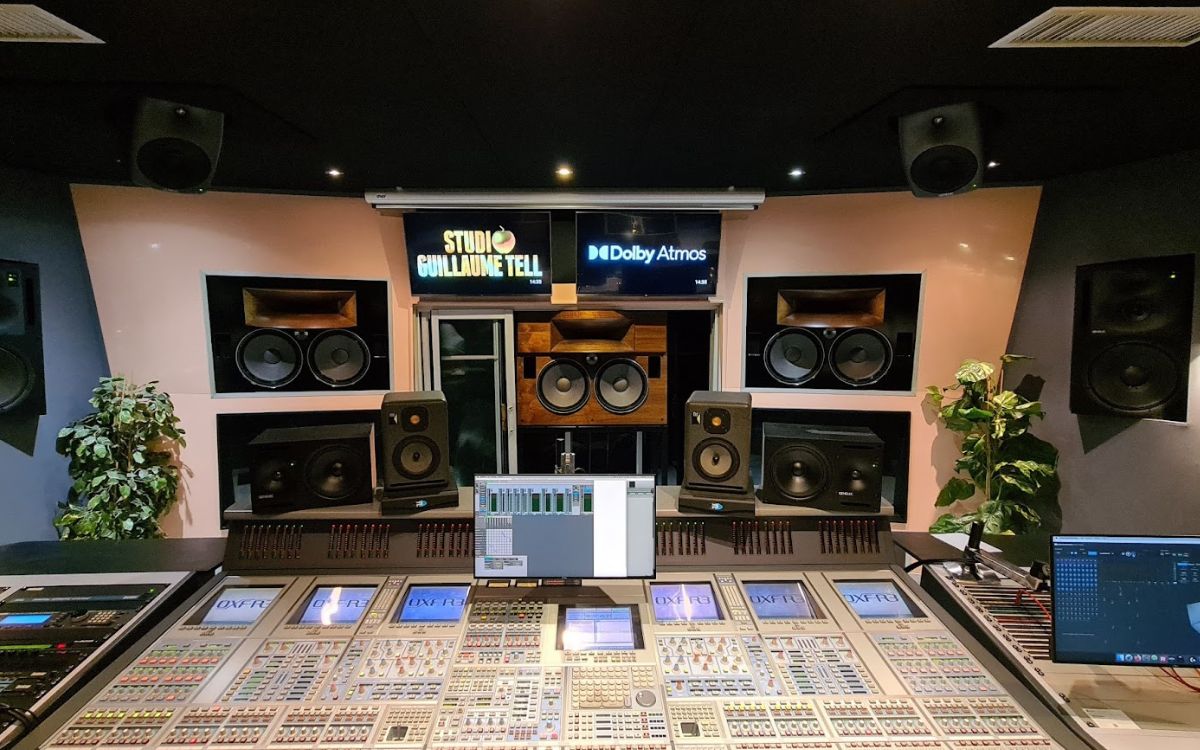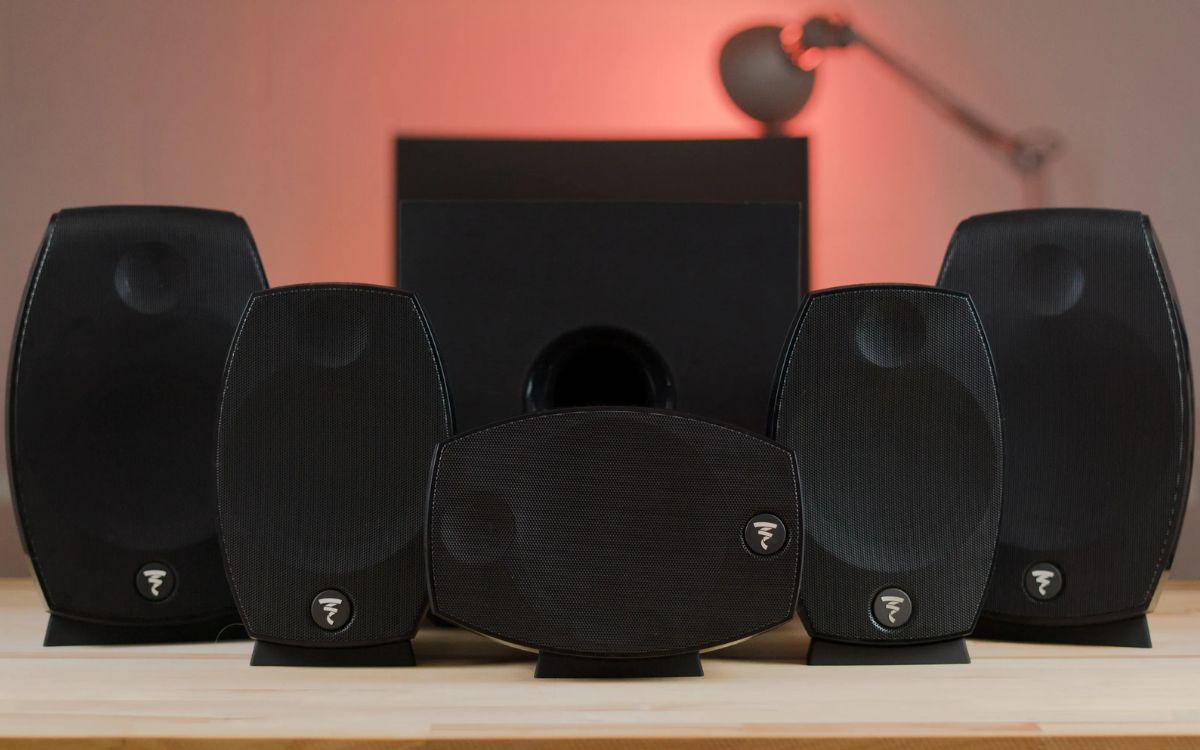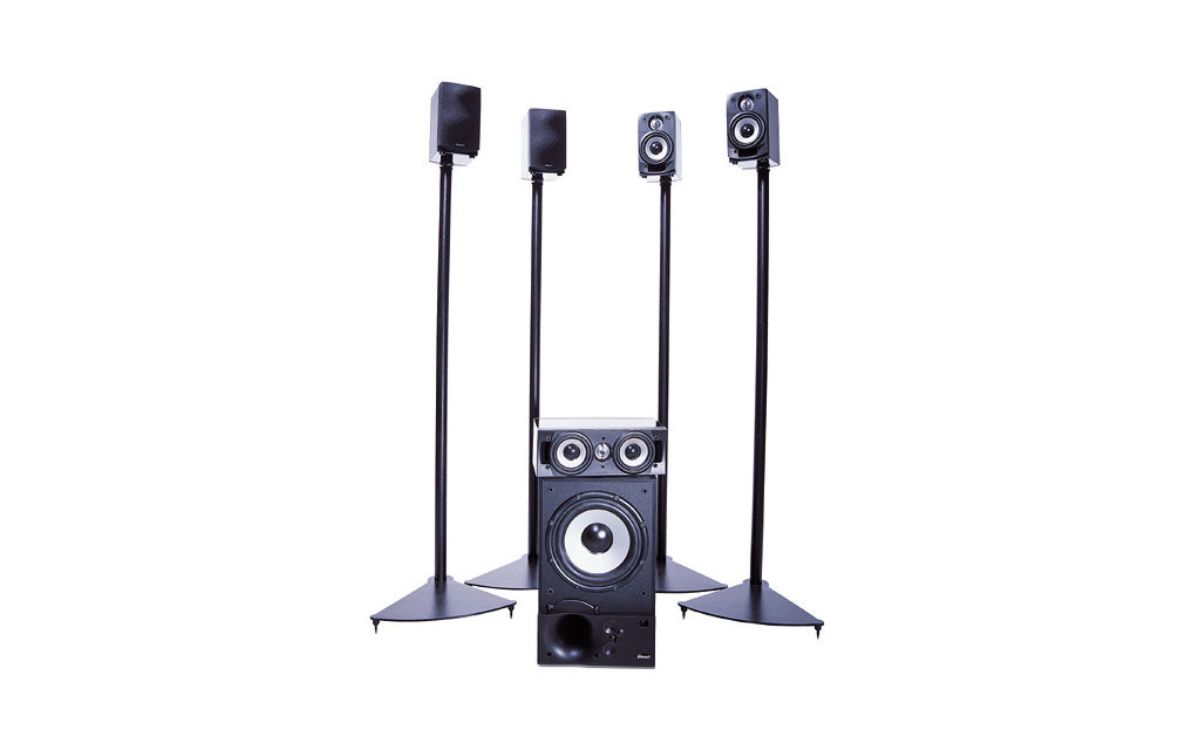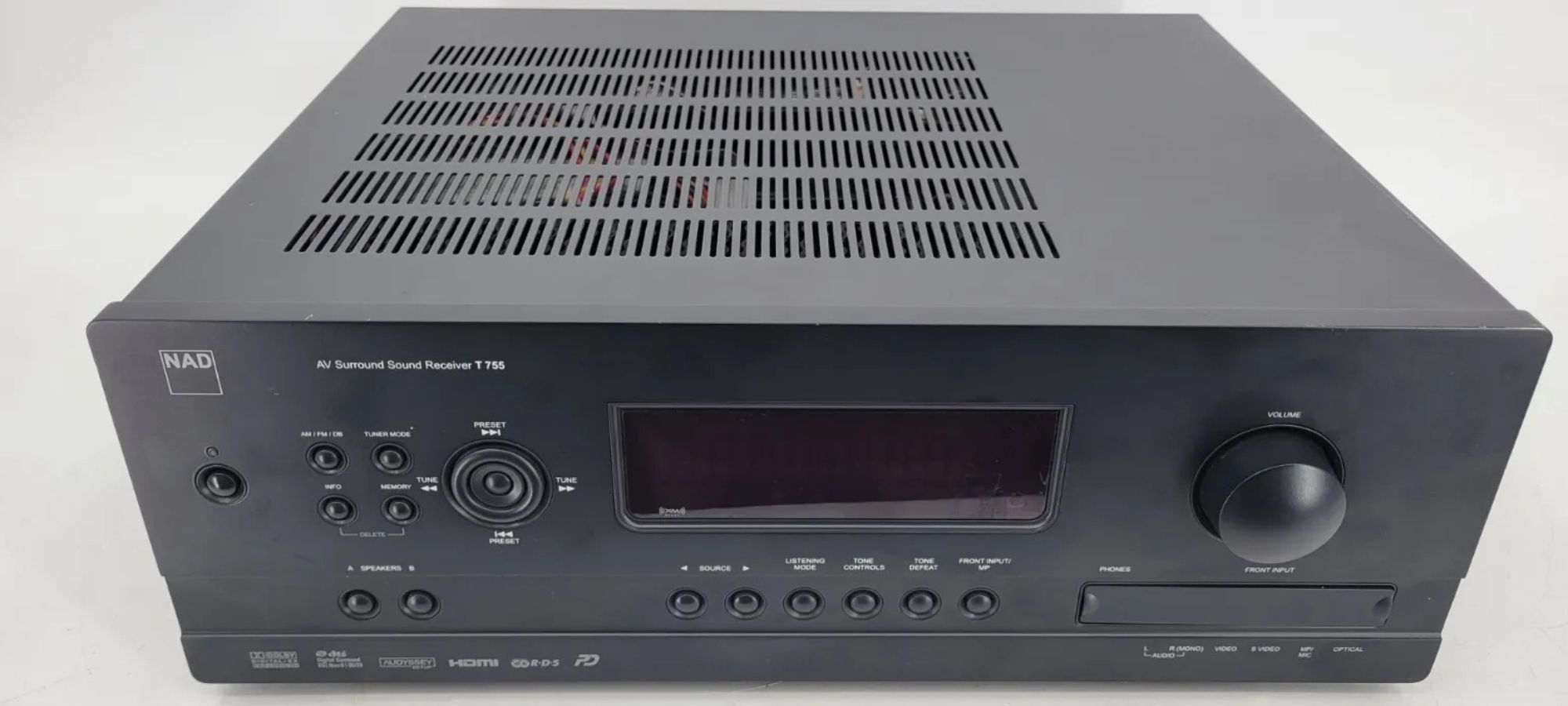Home>Production & Technology>Surround Sound>What Is 6.1 Surround Sound Diagram
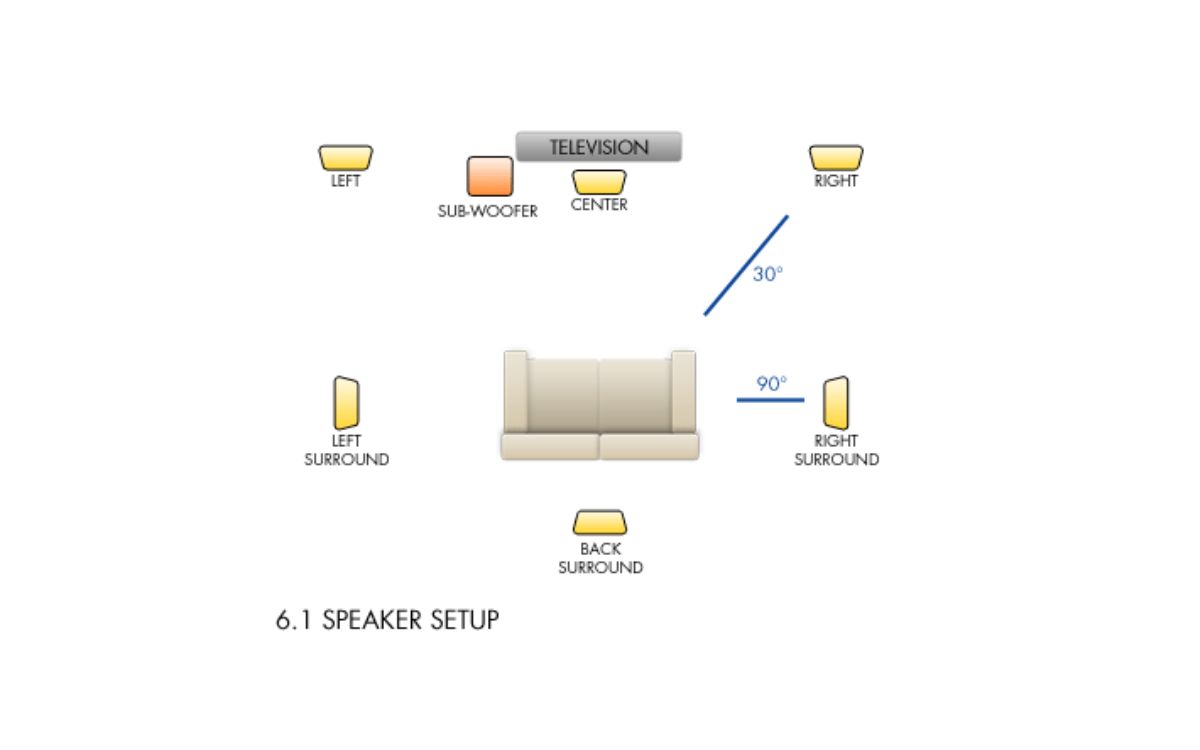

Surround Sound
What Is 6.1 Surround Sound Diagram
Modified: January 22, 2024
Learn about 6.1 surround sound with our detailed diagram. Enhance your audio experience with surround sound systems.
(Many of the links in this article redirect to a specific reviewed product. Your purchase of these products through affiliate links helps to generate commission for AudioLover.com, at no extra cost. Learn more)
Table of Contents
Introduction
Welcome to the world of surround sound! If you’re a true audiophile or someone who simply appreciates high-quality audio experiences, then you’ve come to the right place. In this article, we will delve into the fascinating world of 6.1 surround sound and explore its features, components, benefits, and drawbacks.
Sound is a powerful medium that can transport us to different dimensions, evoke emotions, and enhance our overall entertainment experiences. With advancements in technology, sound systems have evolved to deliver immersive audio that surrounds us from every direction, creating a more realistic and captivating audio environment.
Surround sound systems are designed to replicate the way sound is naturally heard in real-life settings. Through multiple speakers strategically placed around a room, these systems aim to envelop the listener in a three-dimensional audio experience, adding depth, dimension, and a sense of presence to music, movies, and games.
Among the many variations of surround sound systems, 6.1 surround sound is a popular choice for those seeking a more advanced audio setup.
Overview of Surround Sound
Before we dive into the specifics of 6.1 surround sound, let’s first establish a general understanding of surround sound technology. Surround sound is a method of audio reproduction that creates a more immersive listening experience by utilizing multiple audio channels to distribute sound from different directions. The purpose is to replicate the way we perceive sound in real life, where sound comes from all around us.
The most common surround sound configurations are denoted by numbers, such as 2.1, 5.1, and 7.1. The first number represents the number of main speakers, while the following number refers to a subwoofer or low-frequency effects (LFE) channel. For example, a 2.1 system consists of two main speakers and one subwoofer, while a 7.1 system includes seven main speakers and one subwoofer. These systems provide a more encompassing audio experience than traditional stereo speakers.
Surround sound systems rely on multiple speakers placed around the room to create a sense of directionality and depth. By separating audio channels and sending specific sounds to different speakers, surround sound can reproduce audio effects that make you feel like you’re part of the action. This technology is commonly used in movie theaters, home theaters, gaming setups, and even music production studios to enhance the audio experience.
The arrangement of speakers and the specific audio channels they play are crucial in delivering an accurate surround sound experience. Depending on the system configuration, speakers can be placed in front, to the sides, and behind the listener. This spatial distribution of sound sources creates a more realistic and immersive audio environment.
Now that we have a general overview of surround sound, let’s explore the details of 6.1 surround sound and how it differs from other configurations.
What is 6.1 Surround Sound?
6.1 surround sound is an advanced audio setup that utilizes a total of seven speakers and one subwoofer to create a highly immersive audio experience. The “6” in 6.1 refers to the six main speakers, while the “.1” denotes the presence of a dedicated subwoofer for low-frequency effects.
In a 6.1 surround sound system, the six main speakers are strategically positioned around the room to deliver surround sound effects from the sides and rear. These main speakers are usually placed in a 3-front, 2-Side, and 1-rear configuration. The additional rear speaker, compared to a 5.1 system, provides more precise rear sound placement and enhances the overall depth and realism of the audio experience.
The subwoofer, commonly referred to as the “.1” channel, is responsible for reproducing low-frequency sounds such as deep bass and rumbling effects. It adds depth and impact to explosions, music, and other sound effects, creating a more dynamic audio experience.
The 6.1 surround sound configuration is often preferred by movie enthusiasts and gamers who want to be fully immersed in the audio of their favorite films or games. It enhances the spatial accuracy of sound, making it easier to locate specific audio cues and creating a more realistic and captivating experience.
It’s important to note that 6.1 surround sound systems are not as widespread as 5.1 or 7.1 setups. They were more popular in the early 2000s as an intermediate option between 5.1 and 7.1 configurations. However, with advancements in technology and the rise of newer audio formats like Dolby Atmos, 6.1 systems have become less common.
Now that we understand the basics of 6.1 surround sound, let’s explore the components of a typical 6.1 surround sound system.
Components of a 6.1 Surround Sound System
A 6.1 surround sound system consists of several key components that work together to deliver an immersive audio experience. These components include:
- Main Speakers: The main speakers are the heart of the surround sound system. In a 6.1 setup, you typically have three front speakers positioned in the front of the listening area. These speakers are responsible for reproducing dialogue, music, and sound effects that are intended to come from the front of the room.
- Side Speakers: In addition to the front speakers, a 6.1 system includes two side speakers placed on the sides of the listening area. These speakers help provide a wider soundstage and contribute to the immersive surround sound experience. They add depth and realism by delivering audio cues and effects from the sides of the room.
- Rear Speaker: The rear speaker, also known as the surround back speaker, is a crucial component of a 6.1 surround sound system. It is placed behind the listener to create a more accurate and enveloping audio experience. The rear speaker enhances the sense of spatiality and immersiveness by delivering sound effects and ambient audio from behind.
- Subwoofer: The subwoofer is responsible for handling low-frequency sounds, providing deep bass and rumbling effects to enhance the overall audio experience. It adds impact and realism to explosions, music, and other bass-heavy elements. The subwoofer in a 6.1 system is typically a dedicated channel referred to as the “.1” channel.
- Receiver: The receiver acts as the central hub of the surround sound system, connecting all the audio components. It receives audio signals from various sources, such as Blu-ray players, game consoles, and streaming devices, and distributes them to the respective speakers. The receiver also decodes different audio formats and provides control over volume and other settings.
- Audio Source: To enjoy the benefits of a 6.1 surround sound system, you need an audio source that supports the playback of surround sound content. This could be a Blu-ray disc, streaming service, gaming console, or any other device that provides audio output in a compatible surround sound format.
- Speaker Cables and Mounts: Speaker cables are essential for connecting the speakers to the receiver and ensuring proper audio transmission. Mounts or stands may be required to position the speakers at the optimal locations within the room. These accessories help maintain the desired sound dispersion and maximize the sonic performance of the speakers.
By combining these components in a well-designed configuration, a 6.1 surround sound system can deliver a truly immersive and cinematic audio experience.
Now that we have covered the components, let’s move on to understanding the 6.1 surround sound diagram and how it represents the speaker placement in a typical setup.
Understanding the 6.1 Surround Sound Diagram
The 6.1 surround sound diagram is a visual representation of the ideal speaker placement in a typical 6.1 surround sound system. It helps you understand the spatial arrangement of speakers and their respective positions in the room. By following this diagram, you can optimize the audio experience and ensure accurate sound localization.
In a 6.1 surround sound setup, the speakers are positioned as follows:
- Front Left and Front Right: These two speakers are placed in the front of the room on either side of the television or screen. They deliver the main audio elements, such as dialogue and music, that come from the front of the scene.
- Center Channel: The center channel speaker is positioned horizontally above or below the television or screen. It plays a crucial role in delivering clear and precise dialogue, anchoring the sound to the screen and creating a focused front soundstage.
- Side Left and Side Right: These two speakers are placed to the left and right sides of the listening area. They contribute to the width and spaciousness of the soundstage, delivering audio effects and ambient sounds from the sides.
- Rear Speaker: The rear speaker, also known as the surround back speaker, is positioned behind the listener. It creates a more immersive audio experience by reproducing sound effects, ambient audio, and directional cues from behind.
- Subwoofer: The subwoofer can be placed anywhere in the room since low-frequency sounds are omnidirectional. However, positioning it near the front speakers or in a corner of the room can help optimize bass response.
By following the 6.1 surround sound diagram and placing the speakers as indicated, you can achieve a more accurate and enveloping audio experience. Proper placement ensures that the sound travels seamlessly around the room, creating a three-dimensional sonic environment that pulls you into the action of movies, games, and music.
It’s important to note that the diagram provides a general guideline, and the exact positioning may vary based on the specifics of your room, speaker capabilities, and personal preference. Experimenting with speaker placement and making minor adjustments can help fine-tune the audio experience to suit your listening space.
Now that we have a good understanding of the 6.1 surround sound diagram, let’s explore the benefits and drawbacks of using a 6.1 system in your audio setup.
Benefits of 6.1 Surround Sound
Opting for a 6.1 surround sound system comes with several advantages that enhance your audio experience and bring your entertainment to life. Let’s explore some of the key benefits of using a 6.1 setup:
- Enhanced Immersion: The additional rear speaker in a 6.1 system provides a more accurate placement of surround sound effects. It immerses you in the audio environment by delivering sound cues and ambient effects from behind, creating a heightened sense of realism and making you feel like you are part of the action.
- Improved Sound Localization: With the side speakers, a 6.1 setup allows for better sound localization. Audio elements can be precisely placed in the soundstage, making it easier to identify the direction from which sounds are coming and enhancing the overall audio clarity and separation.
- Wider Soundstage: The inclusion of side speakers in a 6.1 system widens the soundstage, providing a more spacious and enveloping audio experience. This creates a sense of immersion by expanding the auditory perception beyond the front speakers and enhancing the depth and dimension of sound.
- Enhanced Low-Frequency Effects: The dedicated subwoofer channel (.1) in a 6.1 setup ensures that low-frequency effects, such as deep bass and rumbling sounds, are reproduced with precision and impact. This adds depth, weight, and excitement to explosions, music, and other bass-heavy content.
- Compatibility with Surround Sound Formats: A 6.1 surround sound system is compatible with a variety of surround sound formats, including Dolby Digital and DTS. It can decode and reproduce audio encoded in these formats accurately, allowing you to enjoy movies, games, and other entertainment content as intended by the creators.
- Multimedia Versatility: A 6.1 setup is not limited to a specific type of media. It enhances the audio experience across various forms of media, including movies, music, video games, and even live performances. Whether you’re watching a thrilling action movie, listening to your favorite band, or immersing yourself in a virtual gaming world, the added speakers in a 6.1 system elevate the audio quality and immersion.
By investing in a 6.1 surround sound system, you can enjoy a more immersive and captivating audio experience that adds depth and realism to your entertainment. The precise placement of speakers and the enhanced sound reproduction make for an engaging and enveloping sonic environment.
Now that we have explored the benefits of a 6.1 system, it’s important to consider some of the potential drawbacks as well.
Drawbacks of 6.1 Surround Sound
While 6.1 surround sound systems offer many benefits, they also come with a few drawbacks to consider. Here are some potential limitations of using a 6.1 setup:
- Limited Content Availability: Compared to more popular configurations like 5.1 and 7.1, there is relatively limited content specifically mixed for 6.1 surround sound. This means that not all movies, music, or games will fully utilize the capabilities of a 6.1 system. However, most 5.1 content can still be effectively played on a 6.1 setup.
- Room Size and Layout Considerations: Setting up a 6.1 surround sound system requires adequate space and careful consideration of your room’s size and layout. The positioning of the speakers, especially the rear speaker, may be challenging in smaller or irregularly shaped rooms. It’s important to ensure that the speakers are correctly placed for optimal surround sound effects.
- Increased Complexity: Compared to simpler setups like stereo or 2.1 systems, a 6.1 surround sound system involves additional speakers and cables, increasing the overall complexity of setup and calibration. This may require more time and effort to achieve proper speaker placement, cable management, and fine-tuning of audio settings.
- Cost: Adding extra speakers to a surround sound system naturally increases the cost. In comparison to basic 5.1 setups, a 6.1 system requires an additional speaker and potentially a more advanced receiver, leading to a higher overall investment. It’s important to consider your budget and priorities when deciding on a surround sound configuration.
- Compatibility with Newer Surround Formats: While a 6.1 system is compatible with common surround sound formats like Dolby Digital and DTS, it may not fully support newer immersive audio formats such as Dolby Atmos or DTS:X, which rely on additional overhead speakers. Upgrading to a 7.1 or newer system might be necessary to fully leverage these advanced audio technologies.
Despite these limitations, many audio enthusiasts and cinephiles still appreciate the enhanced immersion and spatial accuracy that a 6.1 surround sound system offers. It’s important to weigh the drawbacks against the desired audio experience and your specific needs when considering this configuration.
Now that we’ve discussed the benefits and drawbacks of a 6.1 surround sound system, let’s explore some popular applications where these setups are commonly used.
Popular Applications of 6.1 Surround Sound Systems
6.1 surround sound systems find their applications in various entertainment setups where immersive audio reproduction is paramount. Let’s explore some of the popular applications of 6.1 systems:
- Home Theaters: Home theater enthusiasts often opt for 6.1 setups to recreate a cinematic experience within the comfort of their homes. The additional rear speaker provides a more accurate representation of sound placement, making movies come alive and adding depth to the audio.
- Gaming: Gamers appreciate the enhanced audio quality and immersive experience offered by 6.1 surround sound systems. They provide a more accurate representation of in-game sound effects, allowing gamers to locate enemies, identify environmental cues, and be fully immersed in the virtual world.
- Music Listening: Music lovers who prefer a more immersive and enveloping audio experience often opt for 6.1 systems. These setups can enhance the depth and spatiality of music recordings, allowing listeners to hear instruments and vocals coming from different directions and creating a more immersive listening experience.
- Film Production and Mixing Studios: In professional film production and audio mixing studios, a 6.1 surround sound system is often utilized for accurate sound monitoring and mixing. It allows filmmakers and sound engineers to precisely position sound effects, dialogue, and music within the sonic environment, ensuring the intended impact on viewers.
- Virtual Reality (VR) Experiences: Virtual reality is all about creating a fully immersive experience. A 6.1 surround sound system can be used to complement VR experiences by providing realistic and spatially accurate audio cues, enhancing the sense of presence and immersion within the virtual world.
When considering a 6.1 surround sound system, think about how you plan to use it and the specific application you have in mind. This will help determine if the benefits and features of a 6.1 setup align with your desired audio experience.
Now that we have explored the popular applications of 6.1 surround sound systems, let’s wrap up our discussion.
Conclusion
In conclusion, 6.1 surround sound systems offer an advanced level of audio immersion and spatial accuracy, enhancing the overall entertainment experience. With the inclusion of an additional rear speaker, these setups provide a more realistic representation of sound placement, creating a captivating and enveloping audio environment.
While there are some drawbacks to consider, such as limited content availability and increased complexity, the benefits of a 6.1 surround sound system can outweigh these limitations for those seeking a more immersive audio experience. The wider soundstage, improved sound localization, and enhanced low-frequency effects contribute to a more engaging and realistic entertainment experience.
Popular applications of 6.1 surround sound systems include home theaters, gaming setups, music listening, film production studios, and VR experiences. Depending on your specific needs and preferences, a 6.1 setup can elevate your audio enjoyment in these contexts.
Before investing in a 6.1 surround sound system, consider factors such as room size, budget, and compatibility with newer audio formats. It’s also important to properly set up and calibrate the speakers according to the 6.1 surround sound diagram for optimal sound dispersion and accuracy.
Whether you’re a movie enthusiast, gamer, or music lover, a 6.1 surround sound system can bring new dimensions to your audio experience. Immerse yourself in the world of surround sound and elevate your entertainment to new heights.

